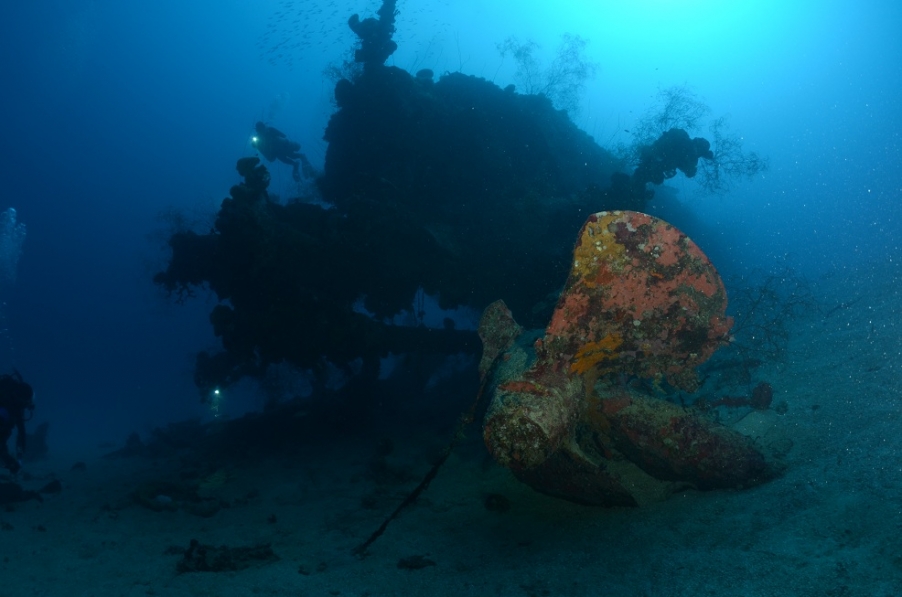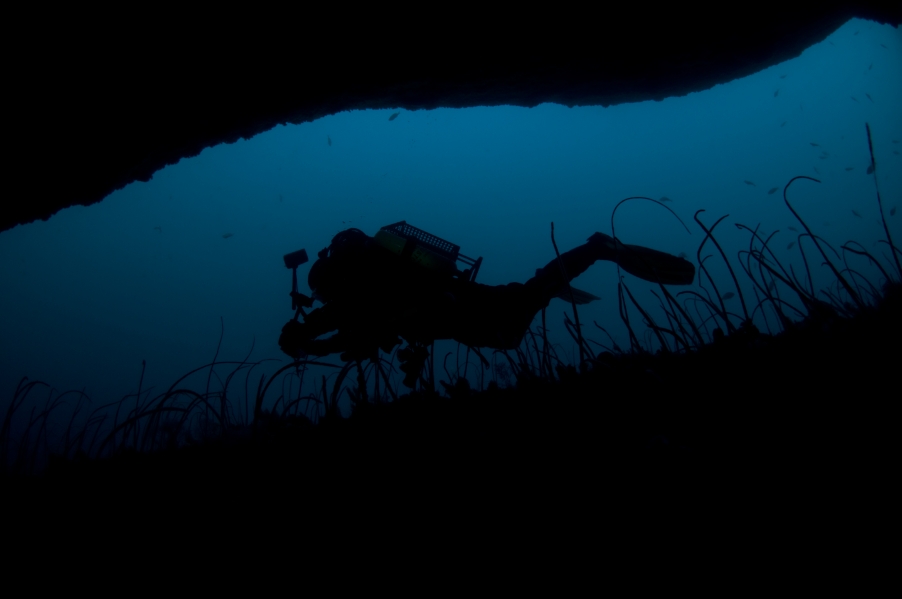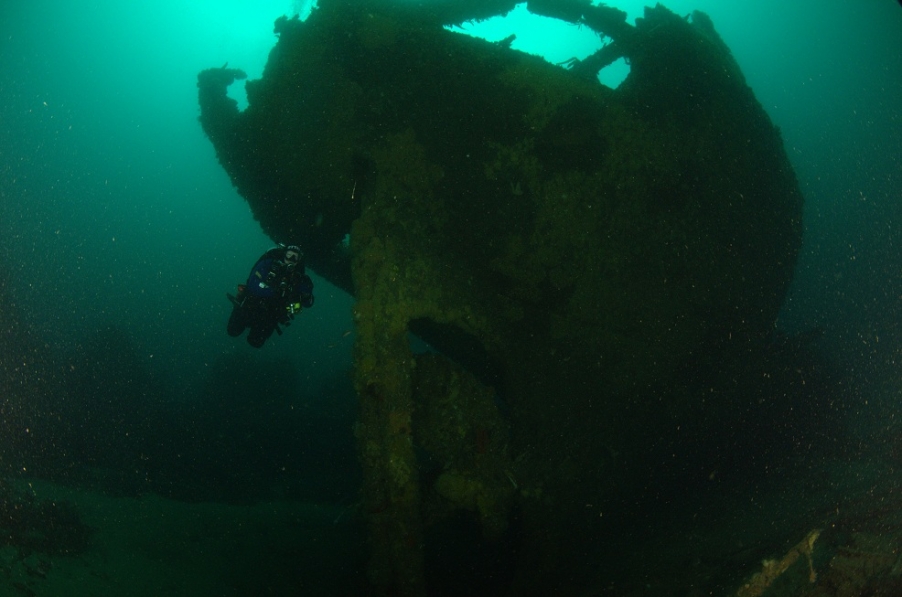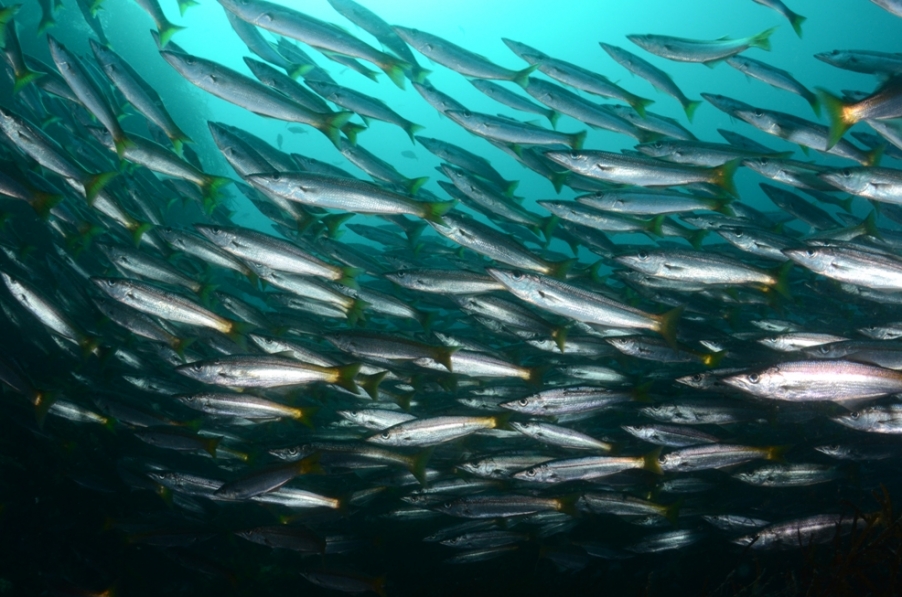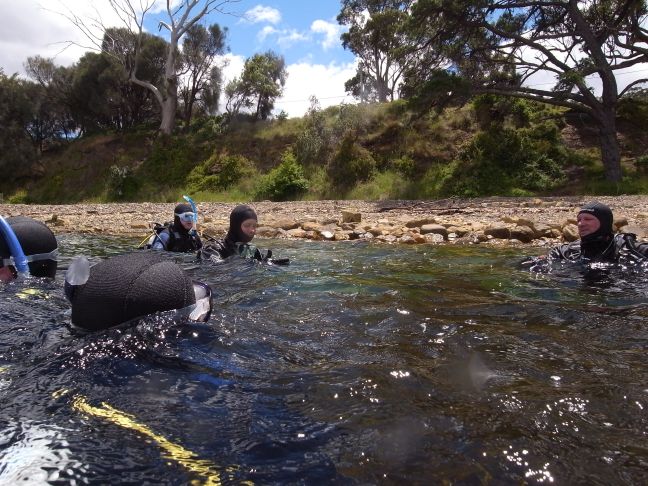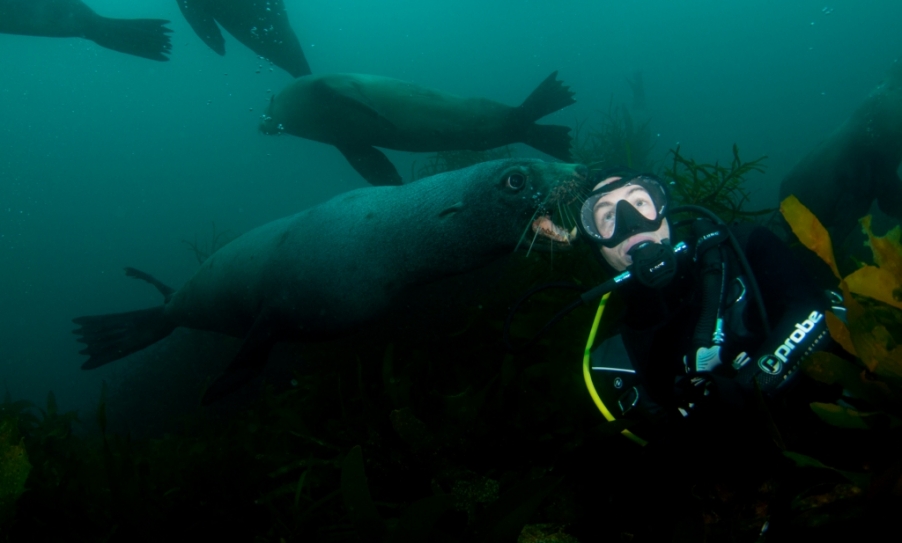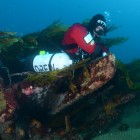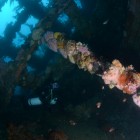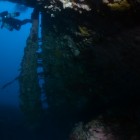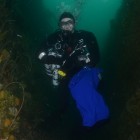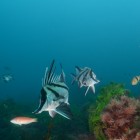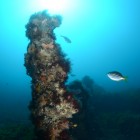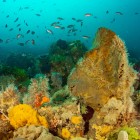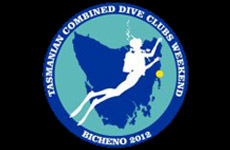Latest Dive Reviews
Jan 20, 2014 - Northeast Camping Trip![]()
![]()
![]()
![]()
![]()
"In the lead up to the Australia Day long weekend plans came together for a far north east camping trip. My self and Janine with Rick in their campervan (the white slug) headed up on the Tuesday, Pax Joined us on Wednesday along with Ashton and Karina with their new (and impressive) Kimberly Kamper, Drew and Sarah arrived Friday in the Burti-Bago and on Saturday we were joined by Brando Justin V, Mick S and Darren H. Since we last visited the area the Cape Portland Wind Farm had been built which was a significant addition to the landscape, was quite striking and somewhat mesmerizing approaching the large turbines as you drove along Cape Portland Road. We set up camp in the picturesque Petal Point camping area which gave us the shortest run out to the wrecks on Fosters Reef off Cape Portland in the treacherous Banks Strait. We also planned to run around to Poole and lunch at Musselroe giving us options to have a look at the wreck of the Mayfield off Swan Island and some of the expansive reef systems found south of Cape Naturalist.
Since the legendary club March Stumpies trips of yesteryear had fallen out of favour the focus of recent club trips to the area has been diving the historic shipwrecks of the General Picton and Loch Finlas, but generally with little success due to the persistent westerly winds which on past trips had prevented us from getting on the water, it was no surprise to us they had built the large wind farm in the area. But for this trip, with a great spell of fine weather forecast in the lead up to the long weekend gave us a great opportunity to get on to the wrecks and beyond.
The historic wrecks of the General Picton and Loch Finlas, both three masted iron barques, first captured my attention when reading about them in Michael Jacques’s self published book Dive Tasmania along with the tales told by past members about diving these wrecks in the 70’s and 80’s. For a number of those on this trip their attempts to dive the wrecks had been thwarted by poor weather or being turned back at the last moment due to deteriorating conditions in Banks Strait as any wind moves against the tide creating nasty standing waves. On this trip we managed to get two days diving on these wrecks, Janine and I first dived them on the Wednesday with Janine’s husband Rick running the boat for us and then again on Sunday where Drew and Pax finally got their chance to dive these wrecks after a number of attempts along with Mick S, Brando and myself. The malfunctioning gear curse hit Justin V having discovered he brought along the wrong dry suit with damaged wrist seals.
A dive on the Loch Finlas and General Picton would have to be one of the best double dives you could do in Tassie. With the Finlas being relatively “intact” with the stern and rudder sitting some 7m above the reef with a maximum depth of around 20m, the lower port hull rises up around 1-2m creating a large overhanging shaded area packed with a wide diversity of colourful sponge and other invertebrate life, and the bow on its side with a large anchor lying up against it. The Stern area is particularly spectacular, as you can swim in amongst the remaining structure and then under the large counter stern with rudder in place. The Picton is heavily broken up and looks to have broken in half with the bow and stern now lying at the bottom of the reef in around 20m. This has created a wide field of wreckage and has attracted a mass of fish life which makes the dive particularly enjoyable, including many boarfish (which is real highlight of the dive), large banded morwong, zebra fish, drummer, schools of Australian Salmon and pike. The deeper part of the wreck has some recognisable structure including rows of ribs sticking up and a large anchor laying on the reef with the large iron masts crisscrossing the wreck. We targeted the Finlas on the low slack tide, being on the bottom end of Fosters Reef it cops the full force of the incoming and outgoing tide, leaving two 20-30 minute periods a day to comfortably dive the wreck. We chose to dive at low tide as this allows us to do a second dive on the nearby General Picton which lies on the western side of Fosters Reef with the wreck site being fully protected for the full duration of the incoming tide, as it flows over and around the reef and wreck.
A day was spent diving out of Great Musselroe where we used the period leading up to the low slack water attempting to find the wreck of the Mayfield off the Swan Island light house. Pax and I did a number of jumps in the vicinity of the wreck as described in Michael’s book and using transect sights off the light house provided to me by ex-club member Greg Squires. But with no luck, by the time the tide turned we gave up as the strong tide flow made it difficult to move across the reef and running with the tide was of little help as the wreck lay in the direction of the tide flow minimising the chance of finding it. So we abandoned our search for another time and headed off for a dive on Salamander Rock.
Salamander Rock, found some six nautical miles of Cape Naturalist would have to be one of the most spectacular dives I have done in Tassie, and having dived it once in 2007 I have been keen to get back to it ever since. This reef rises up from 40m to within three metres of the surface and is comprised of a number of prominent pinnacles, deep canyons and ravines. We had perfect conditions to dive the rock with the 13nm trip from Swan Island to Salamander taking a little less than half an hour, arriving at the rock we spent some time sounding out the area and locating the top of the main pinnacle, which evidently was marked by a couple of seals sunning themselves on the surface. We placed a shot on the pinnacle and found a gentle current running from south to north. Janine jumped in for the first dive reporting a stunning dive but with poor vis, this was unexpected given the off shore area with little influence from coastal effects. By the time Pax and I jumped in the current had picked up significantly and I had a job to pull myself down the shot, and could feel it giving way. The water had a dark green look to and was filled with this gelatinous snot reducing the vis to around 5m, at the first ledge on the pinnacle in 15m we were greeted by a large school of butterfly perch. The dive was spent exploring the narrow ravines and wide canyons in the area. The narrow ravine was particularly spectacular lined with sea whips on both sides, with a gentle current running up through it the sea whips where catching the snot. I found a nice yellow gorgonian fan of around half a metre in area but was matted with the snot. We finished the dive doing a safety stop under the main pinnacle being buffeted by the current and surge from a low swell and kelp swirling all around us. It was great to get back to this magnificent site but disappointed to have such poor vis.
During lay days due to wind, time was spent swimming at Little Musselroe, walking the beautiful white beaches and a spot of Geocaching, where we managed to find four caches stashed in the area. We got out for a bit of fishing where we managed to land a nice catch of large sand flathead which went down well with a few beers around the fire.
Whether they dived or not everyone enjoyed their time up in the far NE, and with the great weather which allowed us to achieve much of our diving objectives made the four and half hour journey (340km) worthwhile.
"
By James P
Who Dived it?








